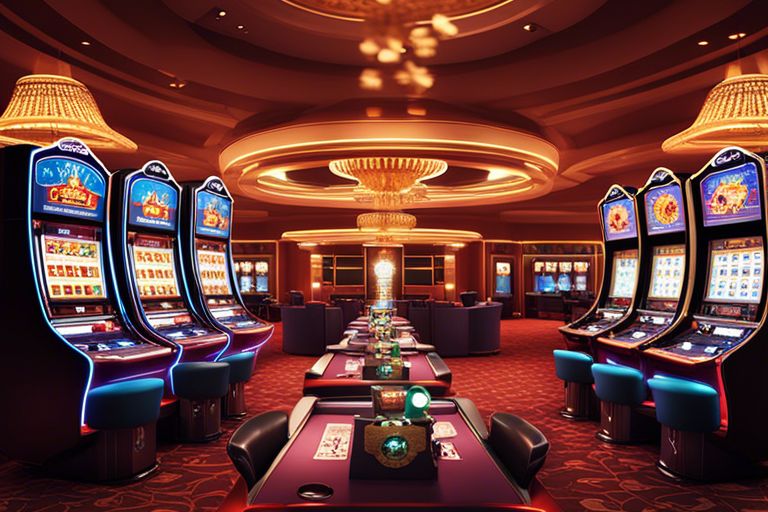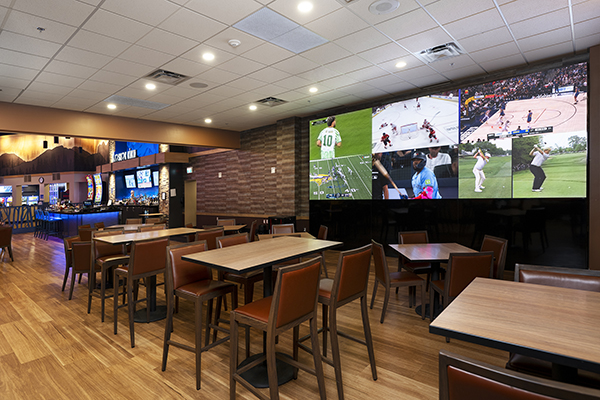What Secrets Lie Behind The Allure Of Gamified Casino Experiences?

Allure surrounds the world of gamified casino experiences, captivating players with interactive features and rewards that elevate traditional gaming. I find it fascinating how these elements not only enhance player engagement but also introduce a risk of addiction. You might be surprised to discover that gamified mechanics, such as progression systems and social interaction, drive your desire to play longer and spend more. Understanding these secrets can help you navigate this thrilling landscape while being aware of its potential pitfalls and benefits. Key Takeaways: Engagement: Gamified casino experiences enhance user engagement by integrating interactive challenges and rewards, keeping players entertained for longer periods. Rewards System: The use of a dynamic rewards system taps into psychological triggers, encouraging players to continue playing to unlock bonuses and achievements. Social Interaction: Many gamified casinos incorporate social elements, allowing players to connect, compete, and share their successes, fostering a sense of community. Enhanced Experience: By incorporating storytelling and thematic elements, gamified experiences provide a more immersive gameplay experience, appealing to players’ emotions. Accessibility: Gamification lowers barriers to entry, making casino gaming more accessible and appealing to a wider audience, including those who may not typically engage with traditional casino environments. Understanding Gamification Before I investigate into the compelling world of gamified casino experiences, it’s crucial to establish a firm understanding of gamification. This term, while buzzing in technological and marketing circles, often eludes a concise definition. At its core, gamification involves the application of game-design elements and principles in non-game contexts to enhance user engagement, motivation, and participation. It leverages the innate human affinity for play, competition, and achievement, transforming mundane tasks into exciting experiences through elements like points, badges, leaderboards, and challenges. In doing so, gamification taps into our desire for accomplishment and recognition, turning ordinary interactions into journeys of both personal and collective growth. One might wonder why this concept has gained such momentum in areas like education, health, and, notably, casinos. By integrating gamification, businesses not only attract customers but also maintain their interest over time. In casinos, for example, gamified experiences may manifest through various loyalty programs that reward players for consistent participation. These programs could include tiered rewards that encourage users to continue engaging with the platform, rich storytelling to immerse them in gameplay, or even social features that connect them with fellow players. The result is an innovative framework that pushes you to explore further while feeling entertained and valued. In essence, gamification is less about traditional game mechanics and more about creating an engaging environment that fosters user participation. It is about blending psychological motivators to enrich experiences across diverse contexts, including the thrilling realm of casinos. To truly grasp the essence of gamification, you can think of it as an alchemical process—a mixture of motivation, design, and interaction, all stirred together to yield an end product that is both exciting and rewarding. Historical Context and Evolution Evolution of gamification can be traced back to various periods and manifestations of human interaction with games and competition throughout history. The roots of gamification stretch back to the dawn of civilization, where the elements of competition and reward were key in society’s development. From the ancient board games played in Mesopotamia to the competitive spirit of sports in ancient Greece, the human attraction to games has historically revolved around a natural desire for competition, socialization, and achievement. As we transitioned into the digital age, these principles began to surface in newer formats, setting the stage for modern gamification. With the rise of technology, particularly the internet, gamification began to evolve significantly in the early 2000s. Platforms like social media started to resemble games, where users could earn virtual rewards like points or badges for their participation. This trend accelerated with the development of mobile technology, which made it easier than ever to engage users in premium gamified experiences. As casinos observed these shifts, they too sought to embrace this powerful tool, incorporating interactive elements into their gaming systems, casino apps, and loyalty programs to attract and retain users, thus redefining the traditional gambling paradigm. Definition aside, the evolution continues even today as new technologies and theories emerge. Many online casinos are continuously innovating, leveraging data analytics and AI to create customized experiences that adapt to players’ preferences and behaviors. This ensures that the gambling environment remains engaging and caters to individual player attributes, further solidifying the importance of gamification in creating alluring casino experiences designed to captivate you from the moment you arrive. Core Elements of Gamified Experiences An understanding of the core elements of gamified experiences is necessary to grasp how they function effectively. At the heart of gamification lies a set of design features that encourage user interaction. First and foremost is the incorporation of progress tracking through points, experience levels, or other metrics that let you visualize your achievements. This visibility fuels your motivation, pushing you to reach the next milestone. Additionally, leaderboards create a sense of competition, allowing you to compare your performance with others while encouraging a social dynamic that holds great appeal. Finally, rewards systems—be it through tangible prizes or virtual accolades—serve to reinforce your bond with the platform, creating an ongoing cycle of engagement and gratification. As you investigate deeper into gamified experiences, I find it necessary to highlight the importance of storytelling. An engaging narrative can elevate your experience, transforming tasks into quests or challenges that resonate on a personal level. When you are immersed in a story, the actions you take feel more significant and purposeful, thereby enhancing the overall engagement. This synergistic effect between gameplay, rewards, and narrative creates a holistic experience that captivates players and keeps them coming back. This intricate web of elements lays the foundation for an environment where I can explore, compete, and be rewarded simultaneously. Variables such as instant feedback, social interaction, and opportunities for skill progression are necessary to the immersive experience. Gamification not only transforms how I engage with casinos but also enriches the overall experience, making each visit an adventure





